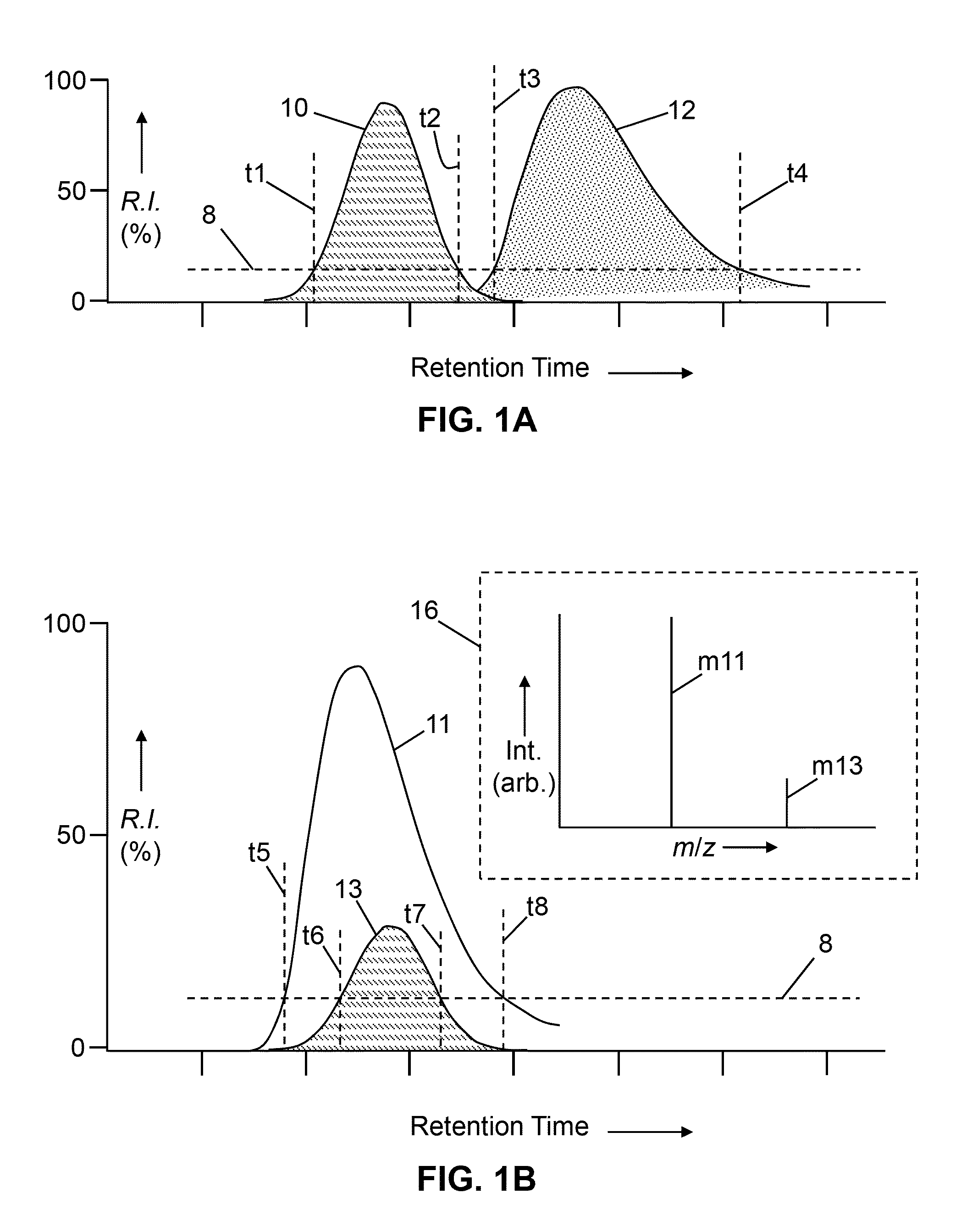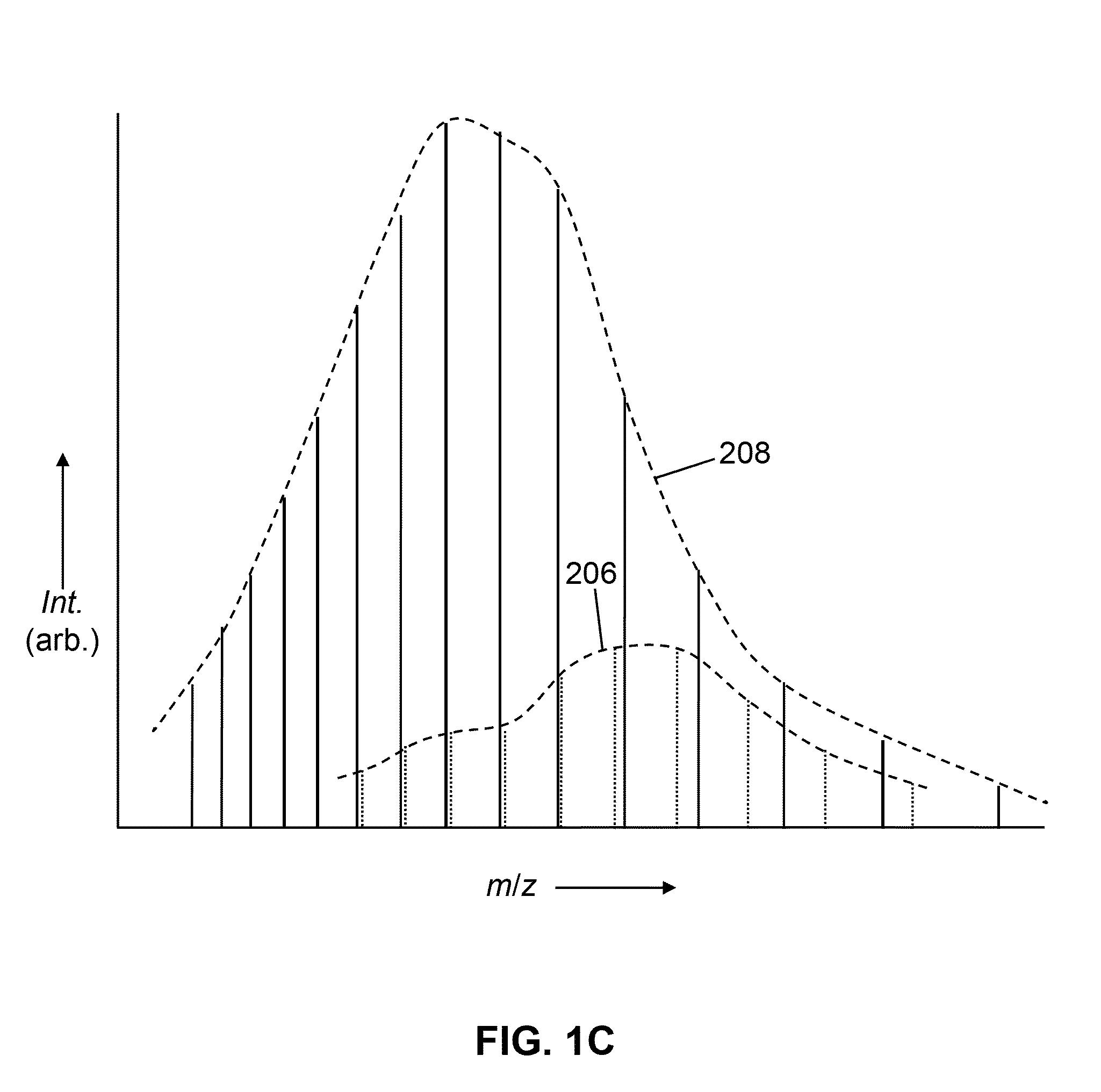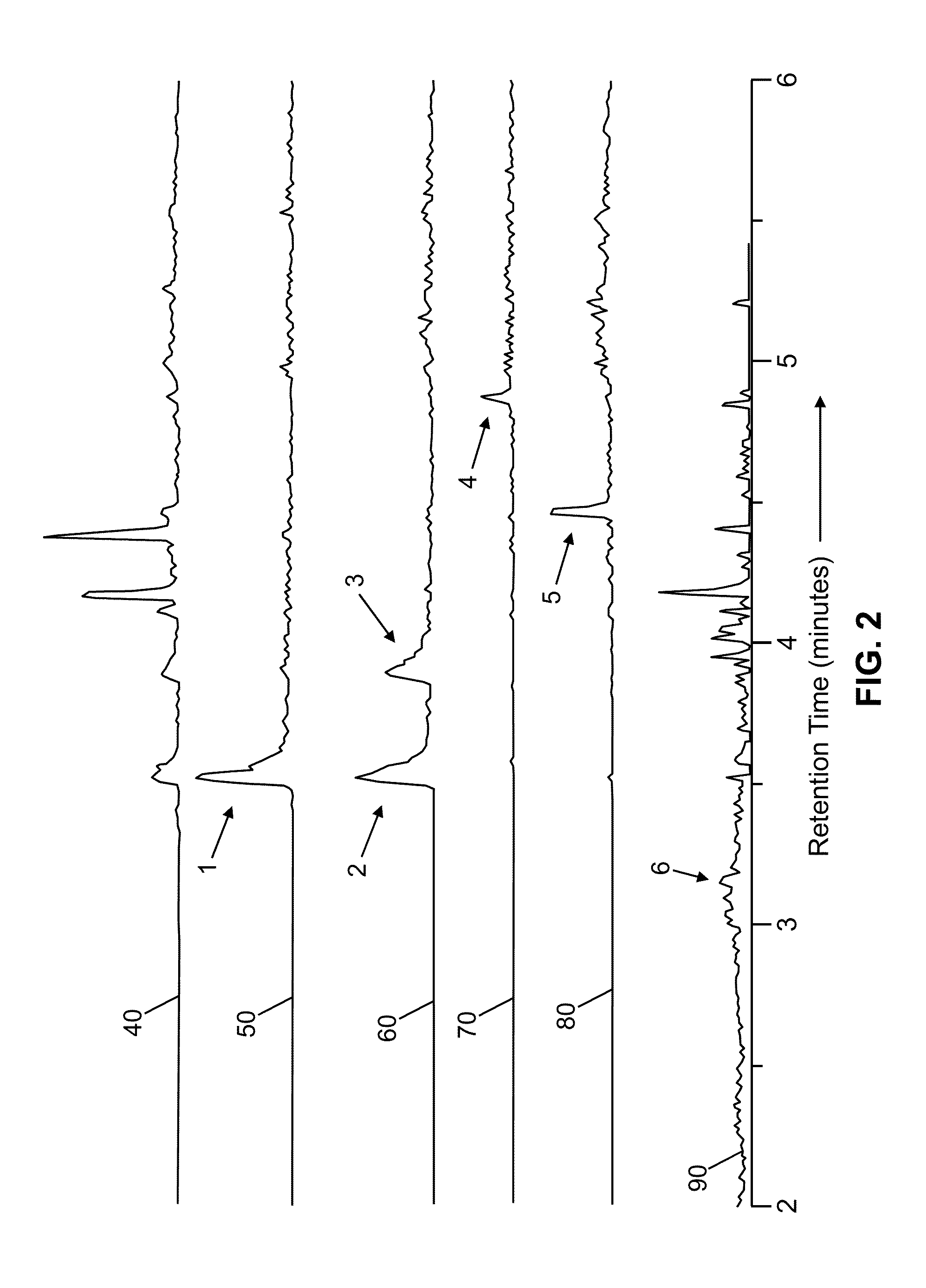Methods for Data-Dependent Mass Spectrometry of Mixed Biomolecular Analytes
a biomolecular analyte and mass spectrometry technology, applied in the field of mass spectrometry, can solve the problems of time-consuming process, expiration of exclusion time, and poor performance of existing dynamic exclusion techniques for analyzing mass spectral of mixtures of complex biomolecules
- Summary
- Abstract
- Description
- Claims
- Application Information
AI Technical Summary
Benefits of technology
Problems solved by technology
Method used
Image
Examples
Embodiment Construction
[0058]The present disclosure describes various improved and novel methods for data-dependent mass spectrometry of biopolymer molecules as well as novel methods for analyzing and interpreting mass spectra of biopolymer molecules. The following description is presented to enable any person skilled in the art to make and use the invention, and is provided in the context of a particular application and its requirements. Various modifications to the described embodiments will be readily apparent to those skilled in the art and the generic principles herein may be applied to other embodiments. Thus, the present invention is not intended to be limited to the embodiments and examples shown but is to be accorded the widest possible scope in accordance with the features and principles shown and described.
1. Mass Spectrometer Hardware Examples
[0059]FIG. 3A is a schematic example of a general for generating and automatically analyzing chromatography / mass spectrometry spectra as may be employed ...
PUM
| Property | Measurement | Unit |
|---|---|---|
| molecular weights | aaaaa | aaaaa |
| time | aaaaa | aaaaa |
| mass spectral analysis | aaaaa | aaaaa |
Abstract
Description
Claims
Application Information
 Login to View More
Login to View More - R&D
- Intellectual Property
- Life Sciences
- Materials
- Tech Scout
- Unparalleled Data Quality
- Higher Quality Content
- 60% Fewer Hallucinations
Browse by: Latest US Patents, China's latest patents, Technical Efficacy Thesaurus, Application Domain, Technology Topic, Popular Technical Reports.
© 2025 PatSnap. All rights reserved.Legal|Privacy policy|Modern Slavery Act Transparency Statement|Sitemap|About US| Contact US: help@patsnap.com



